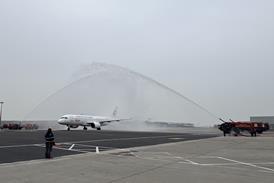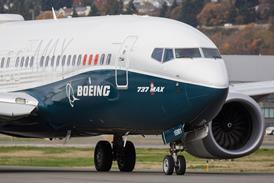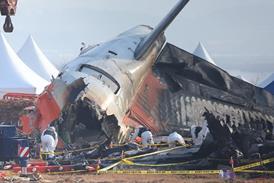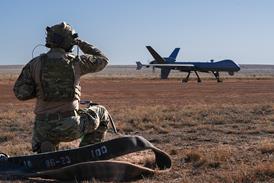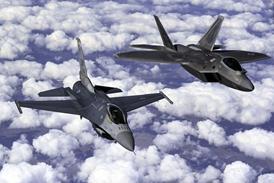Rolls-Royce is taking a hard look at the way it structures its manufacturing base as it confronts the twin challenges of the weak US dollar and rising raw material prices.
Locating more manufacturing sites in dollar zones makes sense, and the UK-based engine manufacturer is looking at increasing its dollar-based capability. But is it doing enough to offset the dollar danger?
Business is booming - as a group R-R is sitting on a record total order backlog of £26.1 billion ($51.1 billion) - but there is no doubt the dollar is casting a long shadow over R-R and its European counterparts. Analysts are forecasting an impact of £80-90 million on the company's 2007 results from the negative effects of currency exchange.

The company says it has the situation under control for the time being, managing its exposure to the US dollar through long-term hedging. It has around $10 billion of hedging in place, giving it visibility on the exchange rate it can achieve for the next three years. "While it is impossible to offset sustained dollar weakness through hedging, the cover we have taken reduces the volatility that exchange rate fluctuations cause and creates the opportunity for us to take other mitigating actions, such as cost reduction and the dollarisation of our cost base," the company says.
Last year, as part of the dollarisation drive, the company pinpointed eight US states that it is considering for production. It issued requests for qualification to Georgia, Indiana, Mississippi, North Carolina, Ohio, South Carolina, Texas and Virginia. The announcement was not just about analysing potential new markets, but was part of a wider drive by the Derby-based company to re-evaluate its production strategy. It employs nearly 8,000 people in the USA and Canada and says it has invested over $1 billion to date in the USA. While it has made significant progress towards increasing its dollar-denominated content (see graph) there is room for more. But will the company follow the example of other aerospace manufacturers and dramatically increase the proportion of production that takes place outside Europe and the USA, targeting low-cost economies? The company is adamant that a significant shift is not on the agenda, but it is not just investigating US options. "Other locations will also be asked to compete," says R-R. And while it is not prepared to reveal which locations are candidates for R-R facilities in the future, with Asia and in particular China and India emerging as bywords for aviation growth, it seems reasonable to assume that R-R is studying these closely. The company recently extended its relationship with Hindustan Aeronautics, signing an agreement to pursue collaboration on engine component design and manufacture in India. And in China, the company already has a manufacturing joint venture with Xian Aero Engines.
But R-R is keen to point out that while low-cost economy outsourcing might be on the increase (see graph), it is not likely to take off to the extent that it has in other parts of the industry. The company has no intention of shifting production to emerging markets, nor does it plan to bypass the locations in which it is already well established for future work. "We are not taking work and putting it overseas. Where we are looking at expansion, we are looking at the global layout of the business. We are considering all our global markets - wherever we are expanding."
Michael Richter, co-president and head of the aerospace and defence investment banking group at Jefferies Quarterdeck, agrees: "At this moment there are few advantages for R-R to place final assembly and test in low-cost economies as it is highly capital intensive and requires a very high skill level. How much R-R will have in low-cost economies in the longer term depends on how those economies develop from an education, skills and infrastructure viewpoint as well as the long-term competitiveness of their wages. However, as these low-cost economies develop their skill base and build their aerospace infrastructure, R-R may need to reappraise that," Richter adds.

Is R-R's cost base low enough to maintain market share against its rivals without resorting to a more drastic offshoring strategy?
"Dollar zone production is useful, but low-cost production initiatives are largely pointless," says Richard Aboulafia, vice-president analysis at Teal Group. "In fact, one of Rolls's most successful offshore ventures is in Perth, Australia. It comes down to technical skills, capital access and production experience, not low costs." But he warns: "With the strength of the UK pound, Rolls needs to lead the way in manufacturing globalisation. Otherwise, GE will continue to enjoy an advantage."
Source: Flight International

